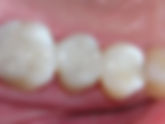Arama Sonuçları
3 results found with an empty search
- MEET THE FAST IMPLANT
Fast dental implants refer to techniques that are designed to speed up the process of dental implant placement and healing. These techniques typically involve the use of specialized implant designs, materials, and surgical approaches that can reduce the overall treatment time and improve patient comfort. One example of a fast dental implant technique is immediate loading implants. With immediate loading implants, the implant is placed into the jawbone and a temporary restoration is attached on the same day. This technique is only appropriate for certain patients who have adequate bone quality and quantity, and requires careful patient selection and planning by a qualified dental professional. Another example of a fast dental implant technique is the use of smaller diameter implants, which require less invasive surgical procedures and can often be placed in areas where traditional implants are not possible due to bone loss or other factors. It's important to note that while fast dental implant techniques can offer some advantages in terms of treatment time and patient comfort, they may not be suitable for every patient. It's important to consult with a qualified dental professional to determine the most appropriate implant technique for your individual needs and to ensure a successful outcome.
- What is a composite filling?
Composite fillings are made from a blend of non-toxic, tooth-coloured plastic and powdered glass. They are used for dental restoration of fractured or decayed teeth, and provide durability and strength to these weaker areas. Composite fillings can be applied on either the front or back teeth, and have a become a popular option due to their 'natural' aesthetic. How are composite fillings placed? How a composite filling is placed depends on the individual case. For instance, if the tooth is in bad shape, you may be required to get a whole filling. However, for many cases, a layer of bonding is perfectly adequate. Your dentist will mould the composite bonding to fit your tooth – restoring its original shape and function. This procedure is done in one sitting, and is usually quick and pain-free. What are the advantages of composite fillings? As previously noted, composite fillings have become increasingly popular since their introduction nearly 50 years ago. But what makes this option so sought after? Natural colour: For many people, the aesthetics associated with composite fillings are a major draw card. They are made to match the shade of existing teeth, making them less visible than amalgam fillings. Reduces the amount of bacteria in the mouth: This is crucial for minimising the risk of tooth decay and infection. Less drilling and preparation than amalgam fillings: For people with fears of the dentists, composite fillings require minimal work and are over in a flash. Extends the life of the tooth: Without fillings, teeth may need to be removed altogether which is considerably more expensive and requires more recovery time. With composite fillings, you can chew as soon as the procedure is complete and delays the need for additional dental work indefinitely. When do I need to get a filling? Fillings are one of the most common and effective dental procedures around. However, it's important to understand when they are needed, so here are some tell tale signs to look out for: If your tooth is cracked, chipped or fractured. You're experiencing strong toothache or sharp pain. There's increased tooth sensitivity. You have broken or lost an existing filling. You've noticed a dark spot or hole in a tooth. Being on the lookout for any of these traits is important, but knowing how to prevent fillings is just as crucial. How can I prevent fillings? Holes in the teeth (cavities) are one of the most common causes of fillings. However, there are preventive measures people can take to reduce the risk of a filling: Minimise sugar consumption: Eating too many sugary foods is a surefire way to increase the risk of tooth decay and cavities. Bacteria within the mouth feed off the sugar. which leads to a build up in acids that wear down the tooth's enamel. This causes holes in teeth which require fillings to repair. Rinse your mouth with water after meals: Sugars and starches can linger in the mouth and on the teeth for a long time after eating. Avoid a buildup of harmful bacteria by rinsing the mouth with water after meals. See your dentist regularly: A dentist can check for signs of tooth decay and cavities early, to stop problems in their tracks. #bahcesehirdent #bahcesehirdisklinik #bahcesehircentraldent #centraldentbahcesehir
- Composite Fillings
C omposite resins, or tooth-colored fillings, provide good durability and resistance to fracture in small- to mid-size fillings that need to withstand moderate pressure from the constant stress of chewing. They can be used on either front or back teeth. They are a good choice for people who prefer that their fillings look more natural. C omposites cost more than amalgam and occasionally are not covered by some insurance plans. Also, no dental filling lasts forever. Some studies show that composite fillings can be less durable and need to be replaced more often than amalgam fillings. I t generally takes longer to place a composite filling than it does for a metal filling. That’s because composite fillings require the tooth be kept clean and dry while the cavity is being filled. Tooth-colored fillings are now used more often than amalgam or gold fillings , probably due to cosmetics. In a society focused on a white, bright smile, people tend to want fillings that blend with the natural color of their teeth. U ltimately, the best dental filling is no dental filling. Prevention is the best medicine. You can dramatically decrease your risk of cavities and other dental diseases simply by: brushing your teeth twice a day with fluoride toothpaste flossing daily eating a balanced diet visiting the dentist regularly.


